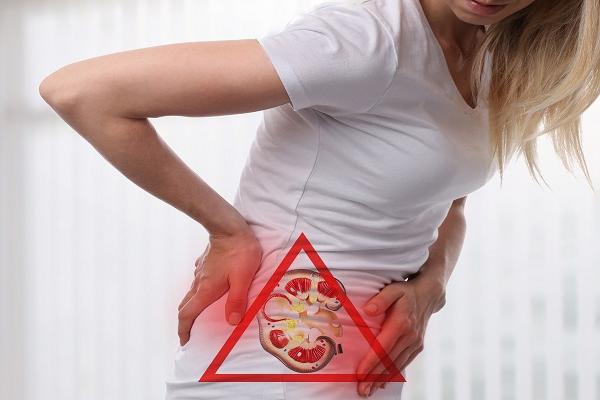Although kidney stones, which seriously affect the quality of life, are mostly seen in men, a recent study revealed that the percentage of stone incidence in women has also increased. Urology Specialist Assoc. Prof. Dr. İlter Alkan evaluated the reasons underlying the increase in the rate of kidney stones in women according to the 'Gender Differences in Urinary Tract Stones' research conducted in America in 2021...
Reminding that kidney stones are one of the most common problems of urology, Urology Specialist Assoc. Prof. Dr. İlter Alkan said that the fact that our country is located in the kidney stone belt brings this problem to an even more important point. Yeditepe University Kozyatağı Hospital Urology Specialist Assoc. Prof. Dr. İlter Alkan reminded us that the probability of kidney stone formation in a person throughout his life is 5-10 percent and said, "We encounter kidney stones around 10 percent in men and 7-8 percent in women. However, we see that these rates have changed with the 'Gender in Urinary Tract Stones' research conducted in America. According to the results of the research, while the rate seen in men was around 350 per hundred thousand, it was around 170 per hundred thousand in women. This is an explanation for the great increase in women."
What is the Reason for the Increase in Women?
Stating that there may be many different reasons behind the recent increase in kidney stones in women, Assoc. Prof. Dr. İlter Alkan continued his words as follows: "The fact that urinary tract infections are more common in women may be one reason for this result. However, the fact that infectious stones are more common in women than men is also one of the factors. In addition, lifestyle changes that can be seen in both genders, wrong diets, nutritional errors, and one of the most important points, consuming less fluid, can also be among the reasons affecting the result."
"Turkey Has a High Incidence of Stones Due to Its Warm Geography"
Stating that the incidence of kidney stones varies from country to country, depending on the geography lived in, Assoc. Prof. Dr. Alkan said, "Urinary tract stones are more common in hot countries. Since Turkey is also located in a hot geography, the incidence of stones in people living here is even higher."
The Type of Treatment Depends on the Size of the Stone
Stating that the treatment of kidney stones varies according to the size of the stone, its location, and whether it obstructs the kidney, Assoc. Prof. İlter Alkan gave the following information on the subject: "For example, if the stone has fallen into the urinary tract and is less than 0.5 millimeters, it is likely to fall spontaneously. However, if it is larger than this, endoscopic (closed) surgical methods may need to be used. In the past, we used the open surgery method in stone treatment, but today we can complete the treatment with closed surgeries without making any incisions in the body or using very small incisions. For stones up to 3 cm in the kidney, the stone can be completely broken with a holmium laser by entering the kidney with a very thin and bendable device through the urinary tract called flexible ureterorenoscopy. In stones larger than 3 cm, we can achieve very effective results with the mini-perc method."
Stating that in very large stones larger than 3 centimeters, which can cover the whole kidney, the complication rates due to percutaneous operation with the Mini-Perc method are considerably reduced, Assoc. Prof. Dr. İlter Alkan gave the following information on the subject: "Mini-Perc is a technique of entering the kidney with a thin tube by making a 0.3-0.5 centimeter incision through the skin. After entering the kidney, the stones are completely removed by melting/breaking with a Holmium laser. In this method, the diameter of the mini-perc device is reduced by half compared to the device used in normal percutaneous surgery (nephroscope). As a result, the possibility of kidney damage while entering the kidney is considerably reduced and a complete stone-free rate (complete removal of stones) of 75 to 95 percent can be achieved. Compared to normal percutaneous surgery, the risk of bleeding is also very low. Moreover, it can be applied to patients of all ages. One of the other important gains of this method is that patients can be discharged within a day or two and continue their daily lives."
May Reoccur Even Though Treated
Reminding that the risk of stone re-formation in people who drop stones is 50 percent within 5 years, Assoc. Prof. Dr. Alkan said, "In 10 years, this now reaches 80-90 percent. Therefore, after passing the stone once, the risk of recurrence is in half. This issue is of great importance. In addition, even if the person treated once with the Mini-Perc method develops stones again, it can be treated using the same method."
"Patient Follow-up and Stone Analysis is Highly Important!”
Expressing the importance of routine follow-up of patients, stone analysis, and metabolic examinations even if the stone is completely removed by surgical treatment, Yeditepe University Hospitals Urology Specialist Assoc. Prof. Dr. İlter Alkan said, "Determining the type of stone is important in terms of the measures to be taken for the following periods, and this analysis is often neglected. With the metabolic (blood and urine analyses) researches to be performed, we start drug treatment if necessary to prevent the recurrence of the stone and warn the patient about the changes that the patient should make in their lifestyle (such as diet). Among the reasons that cause stone formation, consuming less fluid, obesity and improper diets can be listed."
”


